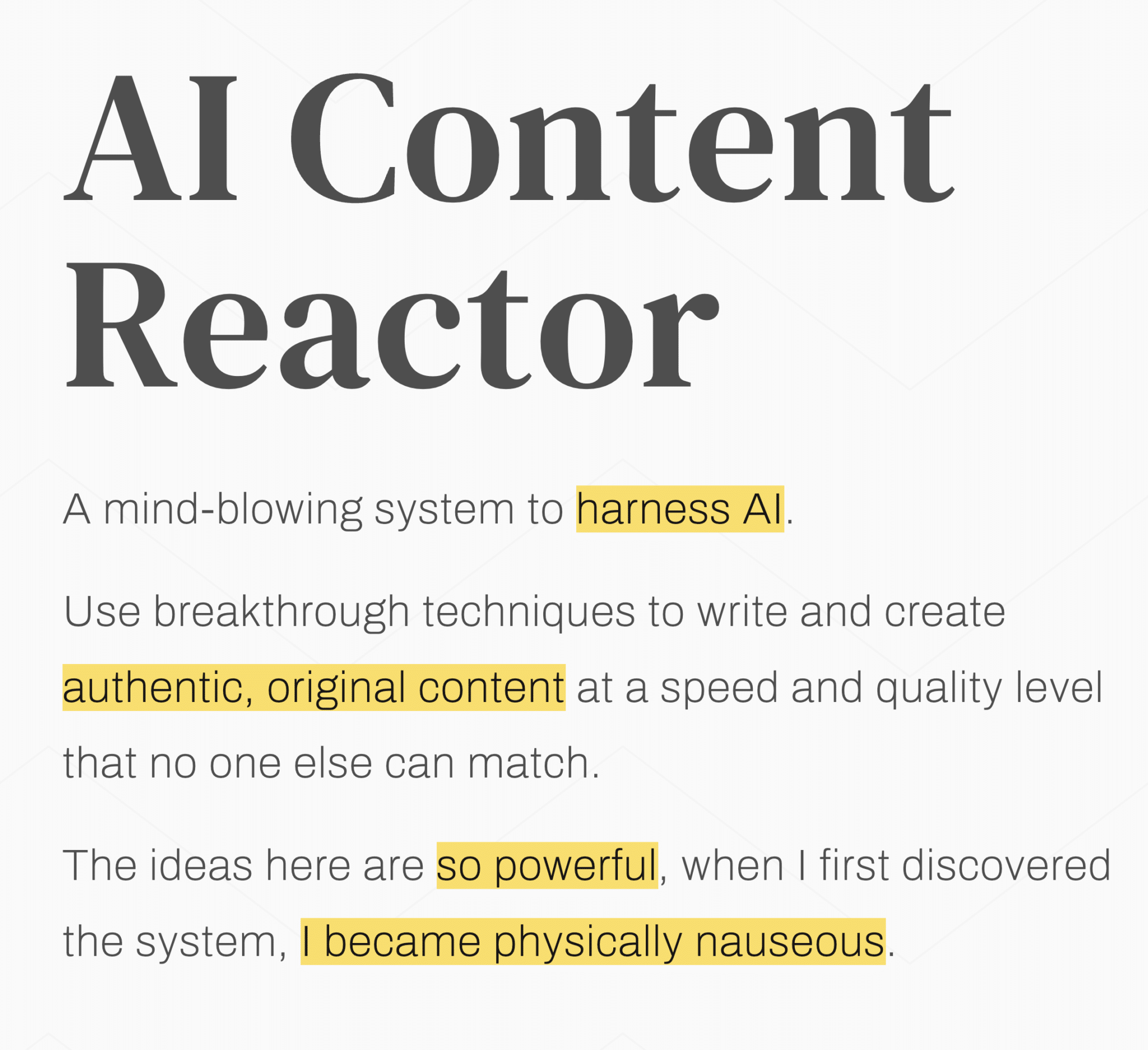I’m no PPC expert… and I don’t pretend to be, but I do know the difference between what converts and what doesn’t. In paid search, it’s easy to get caught up chasing numbers like CTR or conversion rate, but those only tell part of the story.
One metric that deserves more attention is Quality Score. Understanding Quality Score in Google isn’t about obsessing over a new vanity metric. It’s recognizing how it quietly impacts where your PPC ads show up in search results, how much you pay per click (CPC), and the overall experience you’re delivering to your target audience.
And it’s not just clicks. At the end of the day, a solid ad strategy focuses on relevance, alignment, and making sure your message lands with the right potential customers.
Table of contents
What is Quality Score, and why does it matter?
To reiterate, I’m not a PPC specialist, but I do know how to spot what drives conversions and what doesn’t. And when it comes to running effective paid search campaigns, understanding Google’s Quality Score can make or break your performance.
So what is a Quality Score? It’s Google’s internal rating of the relevance and quality of your keywords, ads, and landing pages. It’s measured on a scale from 1 to 10 at the keyword level within your Google Ads account. A higher Quality Score means Google believes your ad is highly relevant to what users are searching for, and that your landing page delivers a good experience once they click.
Why does it matter?
Because even though Quality Score doesn’t directly decide who “wins” in the ad auction, it does influence your ad rank and cost per click (CPC). A higher score often leads to better ad placements and lower costs, giving you more visibility without inflating your budget.
Your Quality Score depends on several key factors.
When you break it down, Google is essentially looking for harmony between three moving parts: the search query, the ad, and the landing page. If those pieces fit together well, users are more likely to click, engage, and convert. Google rewards you for that.
A mismatch, however, creates friction. Irrelevant ads lead to poor click-through rates. A disconnected landing page frustrates users and drives them away. Think of your Quality Score as a snapshot of how well your entire funnel works together, from keyword intent to final action. The stronger the alignment, the easier it is to earn higher placements without paying extra for them.
There are several key factors, including:
- Click-through rate (CTR)
- Keyword relevance within each ad group
- Landing page experience and alignment with the ad
- Relevance of your ad copy
- Historical performance of your Google Ads account
Out of all these, in my humble opinion CTR holds the most weight. If people consistently click on your ad, Google takes that as a signal that your content is useful. In return, they reward your campaign with a higher Quality Score, more efficient CPC, and often better placement in the search results.
In short: Quality Score isn’t just a number. It’s a reflection of how well you understand your audience and how effectively your ads speak to their intent. Getting it right is the key, everything else falls into place.
There are three components to remember.
To begin improving your Quality Score, you need to understand how it’s calculated. Google evaluates your keyword-level performance across three components:
- Expected Click Through Rate (CTR) – This measures how likely someone is to click on your ad based on past performance and similar auctions.
- Ad Relevance – This tells you how closely your ad copy matches the search queries triggering your ads.
- Landing Page Experience – Google analyzes how useful, trustworthy, and easy to navigate your landing page is. Factors include keyword relevance, message alignment, loading time, and mobile usability.
Each is scored as “Above Average,” “Average,” or “Below Average.”
What are the best practices for a better Quality Score?
Improving your Quality Score is building a strong foundation where every part of your campaign works together. The key is to focus on relevance and user experience, making sure that from the first search query to the final click, your ads feel like the obvious, helpful choice.
Let’s break down the practical steps that have the biggest impact, starting with the words people actually see first: your ad copy.
Write relevant, high-performing ad copy.
To improve your ad quality and achieve a higher Quality Score, your ad copy needs to align closely with the user’s search intent. This means writing clear, compelling messages that are not only relevant to users but also packed with targeted, keyword-rich language. Every ad and landing page combination should feel seamless, purposeful, and built to deliver value.
Your Google Ads Quality Score benefits directly from tightly themed messaging and strategic keyword usage. That’s why it’s essential to group related search queries into focused ad groups, so your copy speaks directly to the user’s needs.
Tips:
- Create themed ad groups that match keyword intent (e.g., “wedding bands” vs. “engagement rings”) to boost click-through rate and overall ad relevance.
- Use dynamic keyword insertion where appropriate to increase ad placements visibility and reinforce relevance without sacrificing clarity.
- Emphasize unique value propositions, product benefits, and include clear calls-to-action that motivate users to click on your ad.
- Writing relevant, intent-matching copy isn’t just good practice. It’s also how you lower your cost per click (CPC), improve landing page experience, and increase overall performance across your Google Ads account.
When your ad copy hits the right notes, you’re not “boosting clicks.” You’re setting up the rest of your campaign for success. Strong messaging lays the groundwork for a smooth customer journey, which naturally leads us to the next piece of the puzzle: the landing page.
Optimize the landing page experience.
Your landing page should match the message in your ad, but also load quickly and perform well on mobile devices. A strong user experience leads to lower bounce rates, better long-term performance, and higher conversion rates.
Tips:
- Match content to the ad’s promise (for example, if the ad is about “flannel shirts,” don’t send users to a general apparel page)
- Improve loading time and ensure the page is mobile-friendly
- Simplify navigation and make the call-to-action clear and easy to find
- A well-optimized landing page supports your ad quality, keeps users engaged, and encourages them to take action, all of which contribute to improving your Quality Score and overall Google Ads performance.
A landing page that follows these tips helps your Quality Score and reassures users they’ve come to the right place. Once you’ve built that trust, the next step is to make sure people actually click in the first place. This is where click-through-rate improvements becomes critical.
Focus on expected CTR improvements.
Improving your click-through rate (CTR) starts with aligning your ad copy to match user intent. The more relevant your ad is to what someone is actively searching for, the more likely they are to click on your ad. This boosts performance and supports a stronger ad Quality Score.
Even small tweaks, like rephrasing your call-to-action or restructuring your headlines, can lead to measurable improvements. These refinements help increase your score, improve ad placements, and reduce your cost per click (CPC), all while enhancing the overall performance of your Google Ads account.
Tips:
- Test headline variations that closely match search queries
- Emphasize compelling benefits like free shipping or limited-time offers
- Use emotional triggers or urgency to motivate action
- Matching your messaging to search intent creates a direct path to more clicks, better results, and stronger ROI.
Boosting CTR gets more eyes on your ad and builds a feedback loop that tells Google your content is valuable. Higher engagement improves your Quality Score, which in turn improves placement and lowers costs. With copy, pages, and CTR all working together, you’ll be in a strong position to use Quality Score as a diagnostic tool for smarter strategies.
Use Quality Score as a diagnostic tool.
Rather than trying to “optimize” for a higher number, use the Google Ads Quality Score to uncover friction in the customer journey. A “Below Average” score in any category signals an opportunity:
- Low Ad Relevance? Rework the ad or break out the keyword into its own ad group
- Poor Landing Page Experience? Audit your content for alignment, performance, and mobile usability
- Weak CTR? Test new ad copy variants with stronger hooks or benefits
When you treat Quality Score as more than a number, it becomes a lens for understanding where your campaigns need attention. Low ratings aren’t failures; they’re signals that something in your funnel isn’t connecting.
By using those insights to fine-tune your ads, landing pages, or targeting, you shift from chasing metrics to building campaigns that actually perform. And that brings us full circle: a smarter, user-focused ad strategy where Quality Score improves naturally as a byproduct of doing things right.
Wrapping it up: performance beyond the score.
Remember, a good Quality Score is the result of a smart, user-focused ad strategy, not the ultimate goal. Use it as a diagnostic tool to uncover weak points in your campaign, but measure real success through metrics like conversion rate, ROI, and how well you engage your target audience.
When your ads speak directly to the needs and pain points of potential customers, and your ad grouping is tightly themed, your ad Quality Score will naturally improve.
I’ve heard it said, make your Google Ads account work smarter, not harder. Think of your Quality Score as your compass, guiding you toward better messaging, more effective search engine performance, and a stronger connection with your audience across platforms, including social media.
Need help evaluating how your campaigns are performing?
At Level343, we offer strategic audits, expert insights, and data-driven recommendations that help you reach the right potential customers. Whether you’re promoting a product or service, testing free trials, or improving audience targeting, our approach ensures your ads deliver results that matter. Let’s talk strategy and get your campaigns working at peak performance.



































